Genre: Ball & Paddle Developer: Aisystem Tokyo Publisher: Sage’s Creation Players: 1-2 Released: 1992
When current Apple mogul Steve Jobs (or Nolan Bushnell, depending on whom you ask) put together the Atari classic Breakout for Atari way back in 1976, he most likely had little idea of just how many future games would rise from the concept. There have been clones aplenty, and each successive game tries to improve upon the original formula by adding new gameplay dynamics or shinier graphics. Devilish: The Next Possession by Sage’s Creation attempts both, and in few words, drops the ball completely.
I sincerely appreciate what developer Aisystem Tokyo was going for. The thought of smacking around a ball in a hellish scenario, with paddles that can be reconfigured on the fly and even moved up and down, separate from each other. The potential for a great game is definitely there, but something must have gone very wrong during the transition from the drawing board to the circuit board, because the final product is frustrating in its gameplay and not all that much fun to play.
In fact, the whole product seems rushed. Take the story for example. A prince and princess turned into paddles by an evil demon named “Y?” Is that honestly all they could come up with? I know no one really cares about the story as it has no bearing on the gameplay, but this is the first thing you’re greeted with when you boot up Devilish, and it does not bode well for things to come. The unpolished gameplay is bearing down upon you long before you’ve even stopped snickering at the laughable plot.
That’s what severely hurts Devilish, in my opinion. Jobs and Bushnell were well aware that gameplay was the key to making Breakout a success, and while the tiny amount of game memory they had to work with was a factor, both men knew that people wouldn’t come back to play if they weren’t able to learn and enjoy the game quickly. Devilish seems to have thrown this time-tested belief clear out the window, and instead relies on window dressing and a great soundtrack to get by. A game that consists of two paddles smacking a ball around shouldn’t be too hard to mess up, but the horrible physics does exactly that, and gamers soon find their four short lives gone in the blink of an eye.
Aisystem’s idea of allowing the player to reconfigure the paddles – offensive and defensive – during gameplay seems like a worthy addition to an already established dynamic. You can lift the top paddle vertically to form a right angle (facing either left or right), which allows you to bat the ball sideways more easily. This is useful for banking the ball off one of the side walls and between two rows of tombstones, which must be smashed to progress, as well as for snatching bonus items. It’s also essential for those parts of the stages that scroll horizontally, and you’ll have to learn to manage a vertical offensive paddle for sideways shots along with the defensive paddle for keeping the ball alive. You can also lift the top paddle high towards the top of the screen, allowing you to smash open doors more quickly. The movements are further enhanced through power-ups that can enlarge your paddle, stop time, and turn the ball into a fiery dragon.
The problem is that the ball physics completely kill any effectiveness the controls and power ups might have. The ball doesn’t always ricochet how it should, and often it careens in a direction totally different than what you’d expect, leaving you hopelessly scrambling after it. Small and cluttered stages make this problem even more profound. There are enemies, blocks, rocks, and waterfalls everywhere, and this leads to some real guessing as to where the ball is going to go next. Guessing about the ball’s direction? This, my friends, is a paddle ball no-no. The laws of physics are inescapable, and a game based around that should have done at least that right. I’m simply batting a ball with a paddle here and hitting it as it rebounds off the scenery. Why is that so hard to do right? Hell, Jobs and Bushnell got it right almost twenty years earlier, and Taito’s Arkanoid showed that adding cool power ups didn’t mean you had to sacrifice physics. Shame on you, Aisystem.
As down on Devilish as I might sound, it’s not all bad. The visuals are nice, with some great demonic scenery throughout the varied stages. There are even boss battles! And as I mentioned earlier, the soundtrack is great. It’s a shame that the Genesis version is shorter by one stage than the Game Gear one, and the changes made to the gameplay aren’t all for the better, but what can you do? At least there’s a two-player co-op mode and time trial to ease the pain.
I really, really wanted to like Devilish, and by the sound of what’s included here, I should have. Unfortunately, the poor physics make this one another “could-have-been,” and destined for the bargain bin. It seems that this is to be Devilish’s fate forever, as even the Nintendo DS remake was hampered by poor collision and even fewer stages. Alas, poor Devilish, I hardly knew ye.
SCORE: 4 out of 10


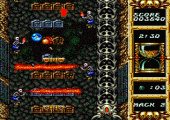
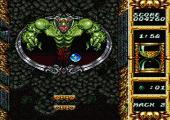
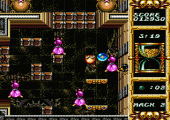
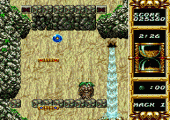
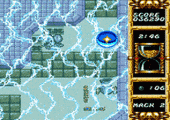
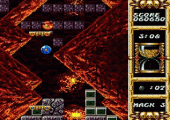
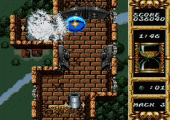
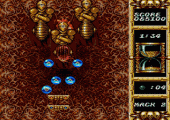
Recent Comments